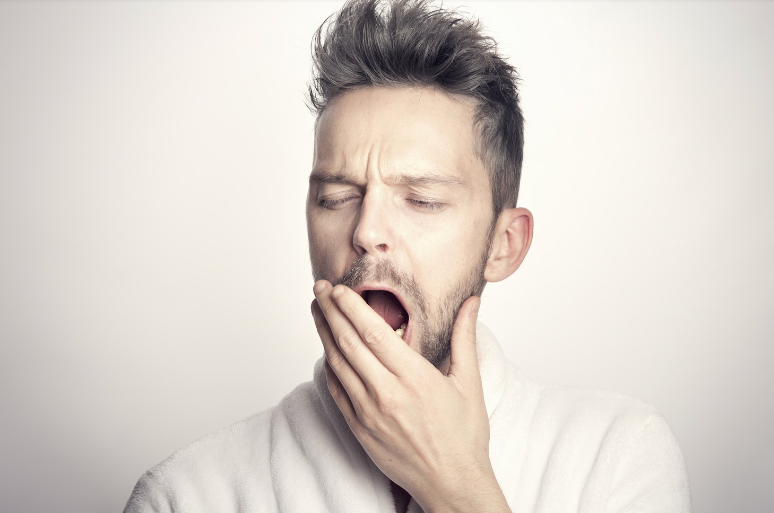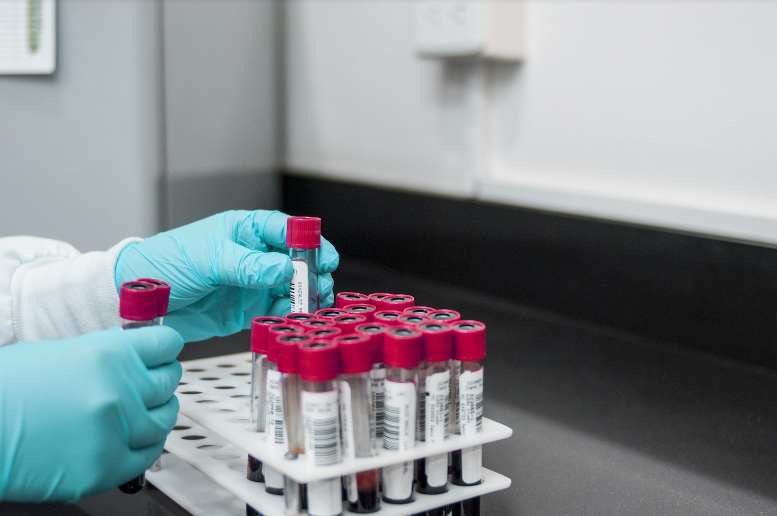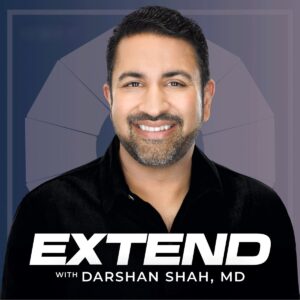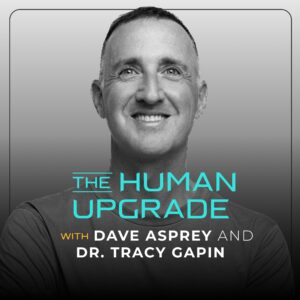
Do you have normal testosterone levels for your age?
Does it matter?
In my practice, I’m more concerned with “optimal” than “normal.” Because every man is different, there really is no normal, but rather, a range in which you would feel your best.
I think it’s worth starting out by making a very critical distinction. When people say “normal,” what they're really meaning is that it falls within a ‘reference range’ that scientists and doctors have established.
But it’s important to recognize that the ‘reference range’ is nothing more than the average of the population, expressed as a bell curve. That range is simply the median plus or minus two standard deviations.
And as we have talked about in the past, we are experiencing a massive testosterone pandemic in which levels have plummeted worldwide by 30%. What that is doing is shifting that bell curve to the left on the graph, meaning the reference range continues to decline every year!
Realize then, that the reference range, or what people erroneously refer to as the “normal” level, is therefore declining for that same reason.
What Is Testosterone and What Does It Do?
You already have a general idea of what testosterone is, but let’s revisit it briefly so we understand exactly what we’re talking about.
Testosterone is a hormone found in both men and women. The testicles in men and the ovaries in women make testosterone, though men make much more of it than women do.
This hormone is the major sex hormone in men and plays a number of important roles in the body including the following:
- Regulates sex drive (libido)
- Helps promote bone growth and strength
- Inspires the development of the penis and testes in infancy, and spawns puberty in adolescence
- Maintains muscle strength
- Regulates fat distribution
- Fosters the production of red blood cells and sperm
- Helps maintain cognitive health
In women, testosterone also supports bone growth and strength, promotes cognitive health, and maintains sex drive.
Why Normal Testosterone Levels Are Important
As you can see from the list above, OPTIMAL (remember, not “normal”!) testosterone levels are important to men for many reasons. It’s about sex drive, yes, but it’s also about cardiovascular health, muscle and bone strength, fat mass, cognitive health, and even longevity.
So what happens if testosterone levels are not ideal?
You’ve probably heard that testosterone levels typically decline as men age. Several studies have shown this. Current data seems to indicate that total testosterone levels fall at an average of 1.6 percent per year while free and bioavailable levels fall by 2-3 percent per year.
The Mayo Clinic also states that in men, “production of testosterone and other hormones declines over a period of many years,” at an average of 1 percent a year after the age of 40. Most men, the Clinic goes on to say, still maintain normal levels, with only an estimated 10-25 percent having low levels.
Still, 25 percent is a lot—a quarter of men with low testosterone levels? Some studies have estimated that percentage as being even higher—with an estimated nearly 40 percent of men aged 45 years and older having low testosterone levels.
If that’s so, what does that mean?
Sometimes men with low testosterone won’t notice any symptoms. But other times they do notice difficulties. These may include reduced sexual desire and activity, yes, but many other issues as well.

What Are Normal Testosterone Levels?
I hear this question every day. A better question to ask, however, is what are IDEAL or OPTIMAL testosterone levels.
Everyone is different, and what’s ideal for you may not be the same for someone else. And as I’ve mentioned, you can test in the “normal” range but not have “optimal” levels, so you may still not be feeling your best.
In general, scientists have determined figures for what they qualify as ‘normal’ testosterone levels depending on a man’s age. But again understand that when we’re talking about “normal” levels, what we’re really saying is that these levels are in the ‘reference range’, based on population-wide studies.
According to the Icahn School of Medicine at Mount Sinai, a normal testosterone level for an adult male is 300 to 1,000 nanograms per deciliter (ng/dL). The University of Rochester Medical Center has slightly different figures, with normal levels between 280 and 1,100 ng/dL.
Others put normal levels between 270 and 1,070 ng/dL, whereas the American Urological Association (AUA) advises clinicians to use a total testosterone level below 300 ng/dL as “a reasonable cut-off in support of the diagnosis of low testosterone.”
The Difference Between Total Testosterone and Free Testosterone
Before we go any further, let’s make sure we’re clear on the difference between total testosterone and free testosterone:
- Free testosterone is testosterone that is not attached to other molecules. This type of testosterone can be more easily used by the body.
- Total testosterone is the grand total of all the hormones available in the bloodstream. This includes both bound and free testosterone. Bound testosterone is attached to other molecules like the sex hormone-binding globulin (SHBGO) and proteins like albumin, and is generally less available for use.
This difference is important because recent research has indicated that both forms of testosterone have an impact on a man’s health. You may have normal total testosterone levels, for instance, but still have symptoms of low testosterone. Your doctor may dismiss your concerns, telling you you’re fine, when the problem may be that you’re low in free testosterone levels.
The key is to have both levels tested so that your doctor can take both into account.
What is the “normal” level of free testosterone? Again, this level may vary depending on the testing lab, but the Cleveland Heart Lab has these figures:
- ‘Normal’ free testosterone levels: 4.5-25.0 ng/dL
- % free testosterone: 1.1-3.0 percent of total testosterone
The lab notes that decreased levels of testosterone and/or free testosterone “indicate partial or complete hypogonadism [low testosterone].”

Normal Testosterone Levels by Age
Now that you know the general figures for low testosterone, let’s go a little deeper and find out what may be normal for your age—again, remembering that normal isn’t optimal, so these figures are only starting points.
Some studies have indicated that testosterone levels generally decline with age, but there is debate as to whether that’s normal or tied to medical conditions like overweight and obesity, heart disease, diabetes, and others.
Understand that currently, outside of the normal testosterone levels cut-off, there is no general agreement among scientists, medical associations, or doctors about where your testosterone should be according to your age.
But we do have some data that can give us some benchmarks. According to studies quoted in Androgens and the Aging Male, edited by B. J. Oddens and A. Vermeulen, normal testosterone levels may be broken down as follows: (please make this into a graphic)
Average Total Testosterone Levels by Age
| Age | Total Testosterone (ng/dL |
| 25-34 | 617 |
| 35-44 | 668 |
| 45-54 | 606 |
| 55-65 | 562 |
| 65-74 | 471 |
| 85-100 | 376 |
Some other studies have put the figures generally higher, but show a similar decline with age. Note, however, that the levels, though they decline, stay in the “normal” range, keeping in mind that this range is based on population-wide data. It’s also important to note that we don’t have similar estimates for free testosterone levels.

7 Signs You Don’t Have Normal Testosterone Levels
It’s easy to test your testosterone levels. You simply take a blood test and get the results. Make sure you ask for both the total and free testosterone level results.
But understand that even if your levels are “normal” – ie in the ‘reference range’ – meaning they are above 300 ng/dL or so – that doesn’t mean they’re “optimal.” And optimal is usually what we want for good health.
What is an optimal level? That varies depending on the person, but usually, it's toward the higher end of the normal range.
Your doctor may determine that you don't need testosterone replacement because your levels are above 300, but you still may not feel your best. Increasing your testosterone levels (which you can do with lifestyle changes) can help you feel younger and more energetic.
How do you know whether you should take the test? Below are signs you can watch for that your testosterone production may be slowing down.
1. Low Sex Drive
Many men experience a decline in sex drive as they age. If you have low testosterone levels, though, you may notice a more drastic drop in your desire to have sex. If you notice a significant change in your sexual desire, talk to your doctor about a possible testosterone test.
2. Erectile Dysfunction (ED)
There are many potential causes of ED. These may include heart disease, clogged blood vessels, diabetes, obesity, some prescription medications, alcoholism, sleep disorders, and much more.
ED may also be related to low testosterone. The hormone helps in achieving and maintaining an erection, stimulating receptors in the brain to produce nitric oxide, which helps widen blood vessels so more blood can flow to the penis.
3. Hair Loss in Unusual Places
Testosterone and hair loss aren’t always directly related, but if you’re noticing hair loss on your chest, arms, legs, or around the face, that may be an indication that your testosterone levels are dropping.
What if you're losing hair on the top of your head? That's a bit more complicated. Both low and high testosterone can result in hair loss on your head because that's more related to dihydrotestosterone (DHT)—a type of testosterone that binds itself to hair follicles. It causes them to shrink, resulting in thinning and hair loss.
High testosterone levels can lead to high levels of DHT, but even men with low testosterone can have normal levels of DHT and thus still suffer from hair loss on the head.
4. Fatigue
This is another symptom that may be caused by a wide variety of factors. Fatigue can be tied to sleep disorders, diet, lack of exercise, chronic stress, and more. But if you’re feeling tired all the time even though you’re eating well and sleeping eight hours a night, it could be that low testosterone is involved.
Low testosterone has been associated with sleep disorders like sleep apnea, too. In a 2014 study, researchers found that it could affect overall sleep quality, and that testosterone replacement helped solve the problem.
5. Loss of Muscle Mass
Typically, as men age, their activity level drops. That can create increased body fat and reduced muscle mass, simply because the men aren’t using their muscles as much as they once did. They’re not going to the gym as often, for instance, or at all.
Men with low testosterone may also experience a drop in muscle mass and an increase in body fat. This is especially true in men who notice more fat in the breast area. This can signal an imbalance between testosterone and estrogen and is something you should talk to your doctor about.
6. Mood Changes
Low testosterone has been linked to mood changes. In a 2013 review, researchers found that low levels of testosterone were related to depressive disorders in certain patients.
In a later 2019 review, researchers examined data from 27 clinical trials involving a total of 1,890 men. They found that testosterone treatment was associated with a significant reduction in depressive symptoms.
Men with low testosterone may also experience irritability or an inability to focus.
7. Bone Loss
Low testosterone may be a risk factor for osteoporosis and bone fractures in men. Osteoporosis is more common in post-menopausal women, but men with low testosterone have been found to have lower bone volume than men with normal testosterone levels.
In a 2017 study, researchers found that testosterone treatment for one year in older men with lower levels significantly increased bone volume and estimated bone strength.

Why Do Normal Testosterone Levels Change With Age?
The common thinking up until recently was that testosterone levels naturally declined with age. In other words, it was a change you could do nothing about.
That thinking has started to change, however. It began with an interesting study out of Australia published in 2011. Researchers looked at 325 men, all over the age of 40 and ranging in age from 40 to 97 years of age. They were all in good health and had an average body mass index (BMI) of 26. (A BMI of 25 is deemed healthy.)
The researchers then took nine separate blood samples over a period of three months and evaluated testosterone levels. They found that the men's levels did not change over that time and that more importantly, even with the large age range in the group of participants, there were no big differences in testosterone levels.
“What we found was,” said study author David Handelsman, M.D. Ph.D., “when you consider all the possible influences, age had no effect on testosterone levels in these very healthy men.”
Another study in 2012 found that testosterone levels did drop over time, but researchers said it was behavioral and health changes that caused it, not the simple fact of aging.
“Declining testosterone levels are not an inevitable part of the aging process, as many people think,” said study co-author Gary Wittert, MD. “Testosterone changes are largely explained by smoking behavior and changes in health status, particularly obesity and depression.”
Other studies have come up with conflicting results, finding that testosterone levels do decline with age for a variety of reasons, some having to do with changes in other hormones.
Are Normal Testosterone Levels Declining Nationwide?
On top of that, we have evidence showing that testosterone levels are declining in men in general. In a 2007 study, researchers found a substantial drop in U.S. men’s testosterone levels since the 1980s. The average levels dropped by one percent per year, meaning that a 65-year-old man in 2002 would have testosterone levels 15 percent lower than those of a 65-year-old in 1987.
“The entire population is shifting somewhat downward we think,” study author Thomas Travison told Reuters. As for why this is happening, the scientists weren’t sure, but they suggested that the changes may be attributed to health and lifestyle factors like smoking and obesity.
A later 2020 study found similar results in young men. After controlling for co-founders like age, race, BMI, and smoking, researchers found that total testosterone levels were lower among men in the later (2011-2016) versus earlier (1999-2000) cycles of the study. Again, the researchers pointed to increased obesity, unhealthy diet, and lack of exercise as possible causes.
It’s important to recognize that this decline is shifting that bell curve we were talking about—in terms of what is “normal”— to the left on the graph, which means the reference range continues to decline.
Realize that the “normal” level is therefore deceiving, and declining for that same reason. Of course, this is confusing and ridiculous, and one reason why I, personally, don’t like the word “normal!” I encourage men to always go by what feels normal to them and to talk to a knowledgeable doctor about whether they need to boost their testosterone levels.

How to Test Your Testosterone Levels
If you think you may be suffering from low or sub-optimal testosterone levels and want to test yourself, your best option is to talk to your doctor. All you need is a simple blood test, which is then sent to a lab for analysis.
You’ll usually want to test early in the morning as this is when your testosterone levels are at their highest. You may also need to stop taking any prescription medications that could affect your results. These may include steroids, barbiturates, anticonvulsants, and androgen or estrogen therapies.
You can use a testosterone home testing kit too, but do your research. Some of these may be accurate, but others may not be. Most likely you’ll end up checking with your doctor either way, so it’s usually best just to work with your doctor from the start.











